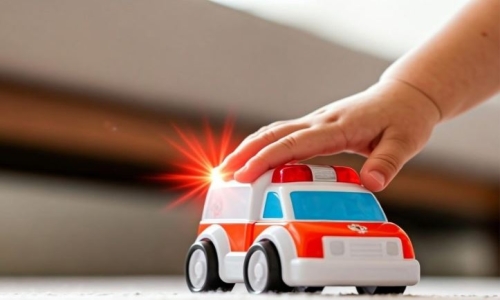


 1:42:47
1:42:47  2025-01-26
2025-01-26  929
929

What happens at home will always be more important than what happens in daycare, because your child’s attachment to you is the dominant psyche. However, if your little one spends more than twenty hours a week in daycare, those hours are definitely having an impact on his development. Some of this impact is positive, as the child learns peer skills and has ample opportunities for exploration. But infants are wired to be in close contact with a primary adult. Parents are more attuned to their children, tend to care for fewer children, and are more easily distracted, so they are better able to meet the infant’s needs. Unfortunately, the United States does not provide paid family leave, so nearly half of children in this country spend most of their waking hours away from their parents during the first two years. This is the critical period of development when the brain’s emotional centers develop.
What does this mean in practice? When you smile at a two-month-old, she takes time to smile back. This dance plays a role in the development of neurons in the orbitofrontal cortex, the brain’s center of emotional intelligence. But when a child care professional smiles at a baby, she can’t wait for the baby to smile back—she has two or three other children to care for. That way, the baby misses out on the moments of attunement she needs. By contrast, a responsive caregiver in a one-on-one day care setting can meet a baby’s needs almost as well as her parents.
By the time she’s toddlers, a baby with well-met needs is better prepared for group care. However, parents should be aware that 2-year-olds who spend the longest periods in day care are likely to have the most behavioral problems. This is understandable, since toddlers who are stressed—and separation from their parents is a stressor for a young child—tend to lash out more often than toddlers. Fortunately, the same studies have found that high-quality parenting protects children from the negative effects of day care. In other words, your child may lash out more frequently because of the separation, but if you treat his behavior with understanding, your relationship and his psychology will remain healthy. The beauty is that children in daycare are as compliant as other children at age 3. This may be the ideal age to start “school,” as children become more able to verbalize their needs and wait for them to be met. Psychologists are still conducting longitudinal studies that will give us the information we need about the effects of daycare, but what is certain is that the quality of care matters. Since much of the brain development that determines mood and anxiety and depression later in life occurs during the first year of life, the results are already fairly well known. The wisdom, simply put, is to try to give babies the attuned connection they need during that critical first year.
If your situation calls for daycare
* Choose a warm, nurturing, flexible daycare, with more staff than children.
* Delay your daycare as much as possible.
* Limit your hours as much as possible.
* Hold off on getting pregnant with another child until your first child is in kindergarten, so you have more bonding time with both of you. The toddler years are tougher than usual for children in day care, and even the most devoted mother can find it difficult to be patient with a toddler when she is sleep-deprived and busy with a newborn.
* Consider eliminating TV time. This eliminates one potential cause of aggressive behavior (which increases with child care), and returns your child’s attention to you as a role model.
* When you are at home, engage warmly with your child in all the ways described in this book to strengthen your relationship. If your toddler is difficult, remember that part of it is due to daily separation, and increase your connection with lots of physical play. The best protection you can always give your child is a happy, reassuring relationship with you.
Preschool (ages 3-5): Developing Independence
You are still the center of your preschool child’s existence, the “North Star” (or attachment axis) around which he or she orients himself. He knows, on a primal level, that if he were to separate from you, he would be unprotected and would face terrible risks, possibly including death. He may have negotiated with you as a trainee lawyer, and he has grown increasingly independent of you while at school or with friends, but Mother Nature has made him dependent for a reason. And that reason isn’t just that he needs protection; his dependence on you also makes him open to your guidance. He may not seem to listen to you all the time, but you are still his most reliable source of information about the world and even about himself.
Many parents who have had a hard time calming their child’s separation anxiety become frustrated or anxious when she struggles to separate from them to start kindergarten. They may wonder, “What’s wrong with my child? Why isn’t she more independent?”
To answer that question, we need to look at what independence really means. When we think of an independent child, we usually think of the child who is easy to separate at two, the child who can sleep outside without a fuss at five, the child who goes away for a month at camp at nine. That’s what an independent child is, right?
Actually, yes. It turns out that these scenarios may not have much to do with independence. They’re about separation from parents, and that’s not necessarily synonymous with independence. Children are biologically wired to orbit around the North Star or axis of attachment, so when they’re away from us, they’re dependent on someone, whether that’s a close friend or a teacher. That dependency is usually a good thing for the teacher, because the child is more prepared to accepting their influence and direction. But circling around a peer is a risk factor for children.
Most importantly, the fact that a child can easily separate from their parents is not necessarily a good thing. We cannot expect a four-month-old to be independent; it is a sign of a developmental disorder. Remember our fifteen-month-old who wouldn’t look up at his mother when she left him in the “strange situation” experience? Is he really more independent? No. Toddlers who don’t seem to notice their parents’ departure are not the ones who have grown to be independent; they are the ones who are withdrawn and have lost hope in having their needs met, hiding their anxiety despite their racing hearts. These children may go on a camping trip without looking back, but that easy separation from their parents may actually be a sign of a frayed attachment that will hinder their ability to form relationships with others.
Children need someone to bond with in order to feel stable. Essential to survival, a parent provides a secure base for a child to feel safe enough to explore the world. Research shows that when we “push” children toward emotional independence, they become more needy. Sometimes, they over-engage with peers and rely on other children as attachment points.
We can recognize emerging independence when a child trusts his or her secure attachment to a parent enough that he or she can engage with the world and successfully complete age-appropriate developmental tasks. That means playing with other children without hitting them, interacting appropriately with teachers, participating in sports teams without throwing tantrums, or taking responsibility for his or her homework. These tasks usually involve the parent at first, but over time, the child begins to interact with the world on his or her own. This is emerging independence.
So instead of thinking of independence as being about our child’s separation from us, let’s think of independence as the child’s ability to feel confident and competent in interacting with the world and managing his or her life, while gradually reducing our role from direct intervention to peripheral presence to phone support to emotional support.
What makes a child independent? Roots and wings. Independence is rooted in secure attachment—the knowledge that mom and dad are there when they need us. Once children know that we are available when they need us, they can focus on their own developmental tasks, which include becoming more independent in handling their responsibilities. If children don’t know they can depend on mom and dad, they will try to get attention and approval, which will hinder them from mastering age-appropriate developmental tasks. If that reassurance doesn’t come soon enough from their parents, children will try to get it from their peers, often with disastrous consequences.
What about wings? Power! When we allow children’s innate self-assertion to blossom by giving them control over aspects of their lives where appropriate, we also encourage their development of independence. This starts early, as we’ve seen when little ones turn one, and they become more self-assertive. They need to experience power in its most positive sense—the ability to influence the world and get the desired outcome. They also need to know that we are still there as a second line of defense. That growing sense of empowerment within our guidance is what helps children develop confidence, and that’s the beginning of independence.
Elementary (6-9), Preparing for Adolescence
How did this happen? Kindergartners have somehow become full-fledged elementary school students. It’s much easier now—they have more self-control. They’re more cooperative and friendly.
But here’s where things get complicated. You’re living your life, trying to hold together a busy family and put dinner on the table, while your child slowly becomes the person he or she will be during the school years. Most parents are so exhausted and consumed by the busyness of life that we take comfort in knowing that our child is increasingly focused on his or her peer group.
But if you’re spending your weekdays out of sight of your child and filling your weekends with exercise, screens, and sleepovers, it’s easy for your worlds to drift apart day by day. He is now so self-sufficient, so preoccupied with his peers and so absorbed in his various screens that you can go a whole weekend without seeing your eight-year-old’s face except occasionally. You may not see the problem yet, but your influence is already beginning to wane as your child begins to shape his behavior outside the home according to the standards of his schoolmates and media images.
Children naturally turn to their peer group for companionship and to the media for information about social “norms.” The danger is when they no longer feel a strong anchor to their parents, who are their “north stars,” and they begin to circle around the peer group or media values. If we don’t establish a close connection before our children reach middle school, they will look elsewhere for connection and guidance. Unfortunately, by the time we realize we are losing our child to the peer group, it becomes difficult to get their attention.
Your goal during the elementary years is to build a strong relationship with your child that will provide a counterbalance to peer culture and a solid foundation to help you navigate the teen years. How?
* Establish family rituals that foster connection. Family meetings, Sunday morning brunch sessions, Saturday lunch dates with Dad on the way to the weekly grocery store, apple picking trips every September.
* Resist the urge to agree to an extra playdate so you can get more of your chores done. Instead, spend some of your downtime hanging out with your child. That’s the time you put in.
Reality Of Islam |
|

If you'

Imagine bei

MIT en

An analysis
 9:3:43
9:3:43
 2018-11-05
2018-11-05
10 benefits of Marriage in Islam
 7:5:22
7:5:22
 2019-04-08
2019-04-08
benefits of reciting surat yunus, hud &
 9:45:7
9:45:7
 2018-12-24
2018-12-24
advantages & disadvantages of divorce
 11:35:12
11:35:12
 2018-06-10
2018-06-10
 6:0:51
6:0:51
 2018-10-16
2018-10-16
 2:2:13
2:2:13
 2022-10-08
2022-10-08
 6:28:21
6:28:21
 2022-12-20
2022-12-20
 11:2:27
11:2:27
 2022-10-06
2022-10-06
 8:39:51
8:39:51
 2022-09-23
2022-09-23
 8:19:41
8:19:41
 2018-06-21
2018-06-21
 7:26:19
7:26:19
 2022-04-08
2022-04-08
 2:34:48
2:34:48
 2022-01-18
2022-01-18
 5:41:46
5:41:46
 2023-03-18
2023-03-18
| LATEST |